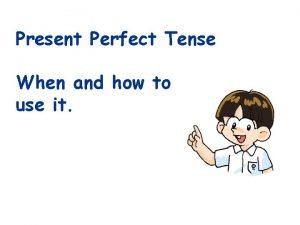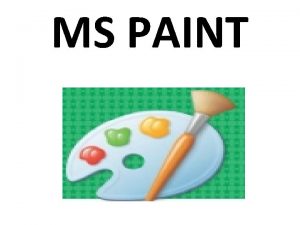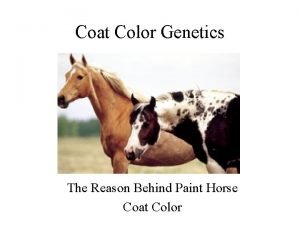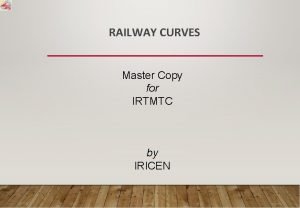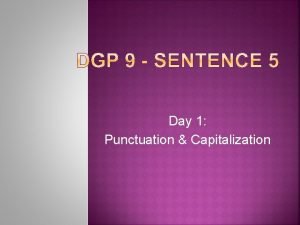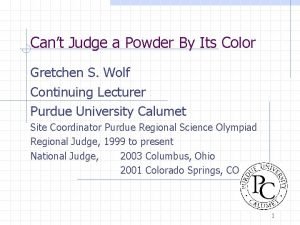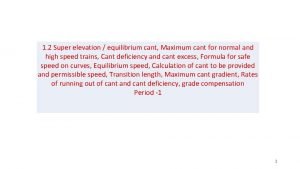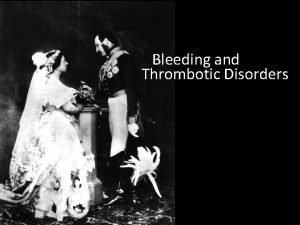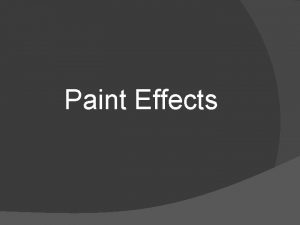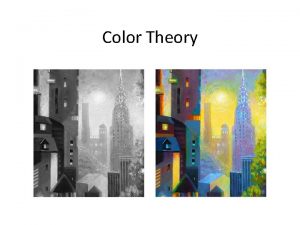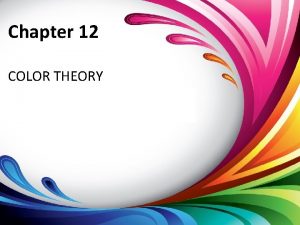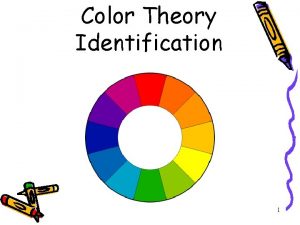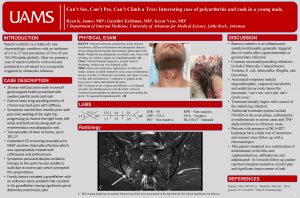Paint Notes Color Theory Color Physics We cant















- Slides: 15

Paint Notes & Color Theory

Color Physics • We can’t see color without light • White light contains all colors Visible light only occupies a small portion of the entire electromagnetic spectrum.

Describe color in terms of: • Hue: Name of the color • Intensity: Brightness or dullness of a color • Value: Lightness or darkness of a color

Intensity Four ways to change the intensity of a color: 1. Add white 2. Add black 3. Add gray 4. Add complement

Value TINT (+ white) Adjust the value of a color by adding black or white. SHADE (+ black)

Primary, Secondary, and Tertiary Colors Primary: RED - BLUE - YELLOW Secondary: PURPLE - GREEN - ORANGE Tertiary: Yellow-orange, red-purple, blue-green and yellow-green

Color Temperature The closer a color is to red-orange, the warmer it is; the closer to blue-green, the cooler it is.

Color Schemes • • • Monochromatic Analogous Triadic Complementary Split Complementary

MONOCHROMATIC One color, different values Pablo Picasso, The Old Guitarist - 1903

ANALAGOUS Share a common hue Vincent van Gogh, The Iris - 1889

TRIADIC Forms a triangle on the color wheel Sarrah Phipps, Untitled - 1999

COMPLEMENTARY One hue and its complement Sandy Skoglund, Revenge of the Goldfish - 1981

SPLIT COMPLEMENTARY One hue & the hues on either side of its complement. Edgar Degas, Elena Carafa - 1875

PAINT ANATOMY • Pigment: finely ground, colored powder • Binder: liquid that holds together and drives pigment • Watercolor = gum arabic • Acrylic = acrylic polymer • Solvent: controls thickness or thinness (dilutes) • Watercolor = water • Acrylic = water / acrylic medium

Color Context Colors look different depending upon what colors they are placed with.
 Paint paint paint paint
Paint paint paint paint You are what you measure quote
You are what you measure quote If you can't measure it you cannot improve it
If you can't measure it you cannot improve it Pencil tool in ms paint images
Pencil tool in ms paint images Paint horse coat patterns
Paint horse coat patterns Railway curves iricen
Railway curves iricen O doamne mare cand privesc eu lumea
O doamne mare cand privesc eu lumea Rob cant freshfields
Rob cant freshfields If you can t beat them join them
If you can t beat them join them Jeb likes cars but he cant drive yet dgp
Jeb likes cars but he cant drive yet dgp Can't judge a powder science olympiad
Can't judge a powder science olympiad Cant deficiency formula
Cant deficiency formula Os coxae
Os coxae Cant turn off
Cant turn off Rail cant
Rail cant Natural materials and man made materials
Natural materials and man made materials
